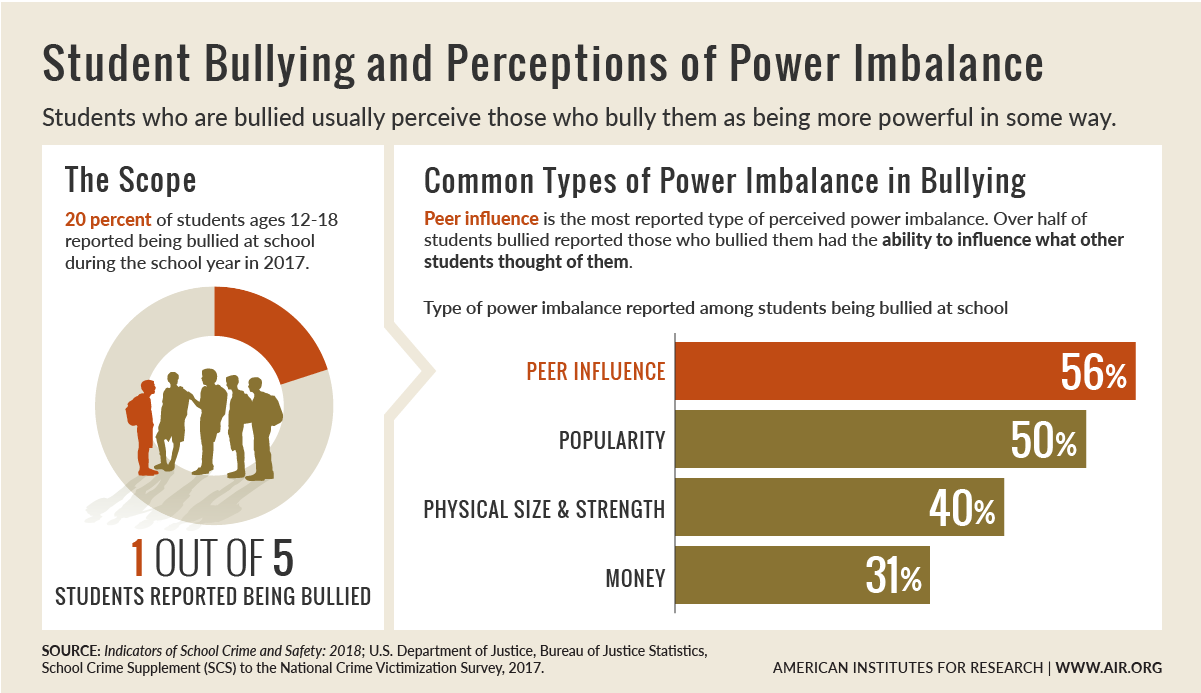New Report Looks at Trends in Opioid Use and Availability Among Students
American Institutes for Research Contributes to National Report on School Crime and Safety
Washington, D.C. – As efforts to contain the national opioid crisis continue, a new report shows that use of heroin and other types of opioids has fallen among youth in recent years. The report also shows that students believe heroin and other types of opioids are becoming harder to get.
Indicators of School Crime and Safety: 2018, released on April 17, 2019, was produced jointly by the National Center for Education Statistics (NCES), in the U.S. Department of Education, and the Bureau of Justice Statistics, in the U.S. Department of Justice. Using results from several national surveys and questionnaires, this report presents the most recent data available on school crime and student safety.
The American Institutes for Research (AIR) assisted NCES in producing the report. As part of its work, AIR staff developed 14 of the 16 update indicators in the report and authored two of the three spotlights, including Use, Availability, and Perceived Harmfulness of Opioids Among Youth.
Using data from Monitoring the Future (MTF), a nationally representative survey, this spotlight examines national trends in opioid use among students in grades 8, 10 and 12 from 1995 to 2017, as well as by student and family characteristics in 2017. It also looks at trends in students’ reported ease of access to opioids and their perceived harmfulness of opioid use over time. The data are useful as research shows that youth are particularly susceptible to harm from opioids misuse and living in a home with opioid-dependent parents.
Among the findings in the spotlight:
Heroin Use
- The percentage of youth reporting that they have ever used heroin is relatively low, but represents tens of thousands of individuals. In 2017, about 0.7 percent of grade 12 students, 0.4 percent of grade 10 students, and 0.7 percent of grade 8 students reported ever using heroin. These percentages represent more than 70,000 students in just those three grades.
- Since 1995, heroin use is down for all grade levels surveyed. The percentage of grade 12 students who reported using heroin in the past 12 months fell from 1.1 percent in 1995 to 0.4 percent in 2017. During the same time period, the percentages also fell for students in tenth grade (1.1 percent to 0.2 percent) and eighth grade (1.4 percent to 0.3 percent).
Use of Narcotics Other Than Heroin
- Use of narcotics other than heroin was more common than heroin use among grade 12 students. In 2017, 6.8 percent of grade 12 students reported ever using narcotics other than heroin and 4.2 percent reported using these narcotics in the past 12 months.
- The percentage of grade 12 student who reported using narcotics other than heroin has not measurably changed between 1995 and 2017. However, the rate has fallen since 2005.
Ease of Access to Heroin and Other Narcotics
- Between 1995 and 2017, there was a drop in the percentage of students who reported it would be "fairly easy" or "very easy" to get heroin. For instance, in 1995, 35.1 percent of grade 12 students said it would be "fairly easy" or "very easy" to get heroin, but that percentage fell to 19.1 percent in 2017.
- A larger percentage of grade 12 students reported it would be "fairly easy" or "very easy" to get narcotics other than heroin than it would to get heroin. In 2017, more than a third of grade 12 students (35.8 percent) reported that narcotics other than heroin would be "fairly easy" or "very easy" to get. While this is not measurably different than 1995, it is down from a high of 54.2 percent in 2010.
AIR also authored a second spotlight, Perceptions of Bullying Among Students Who Reported Being Bullied: Repetition and Power Imbalance. This spotlight examines perceptions of bullying among youth who reported being bullied, including whether victims of bullying felt like it would happen again and what type of power imbalance they perceived between themselves and the person who did the bullying.

The Indicators of School Crime and Safety: 2018 can be viewed on the NCES website.
About AIR
Established in 1946, with headquarters in Washington, D.C., the American Institutes for Research (AIR) is a nonpartisan, not-for-profit organization that conducts behavioral and social science research and delivers technical assistance both domestically and internationally in the areas of health, education and workforce productivity. For more information, visit www.air.org.
###
[1] Martins, S.S., Segura, L.E., Santaella-Tenorio, J., Perlmutter, A., Fenton, M.C., Cerda, M., Keyes, K.M., Ghandour, L.A., Storr, C.L., and Hasin, D.S. (2017). Prescription Opioid Use Disorder and Heroin Use Among 12–34 Year-Olds in the United States From 2002 to 2014. Addictive Behaviors, 65: 236–241. Retrieved August 2018, from https://www.sciencedirect.com/science/article/pii/S0306460316303148?via%3Dihub.
[2] Nargiso, J.E., Ballard, E.L., and Skeer, M.R. (2015). A Systematic Review of Risk and Protective Factors Associated with Nonmedical Use of Prescription Drugs Among Youth in the United States: A Social Ecological Perspective. Journal of Studies on Alcohol and Drugs, 76(1): 5–20. Retrieved August 2018, from https://www.jsad.com/doi/abs/10.15288/jsad.2015.76.5.